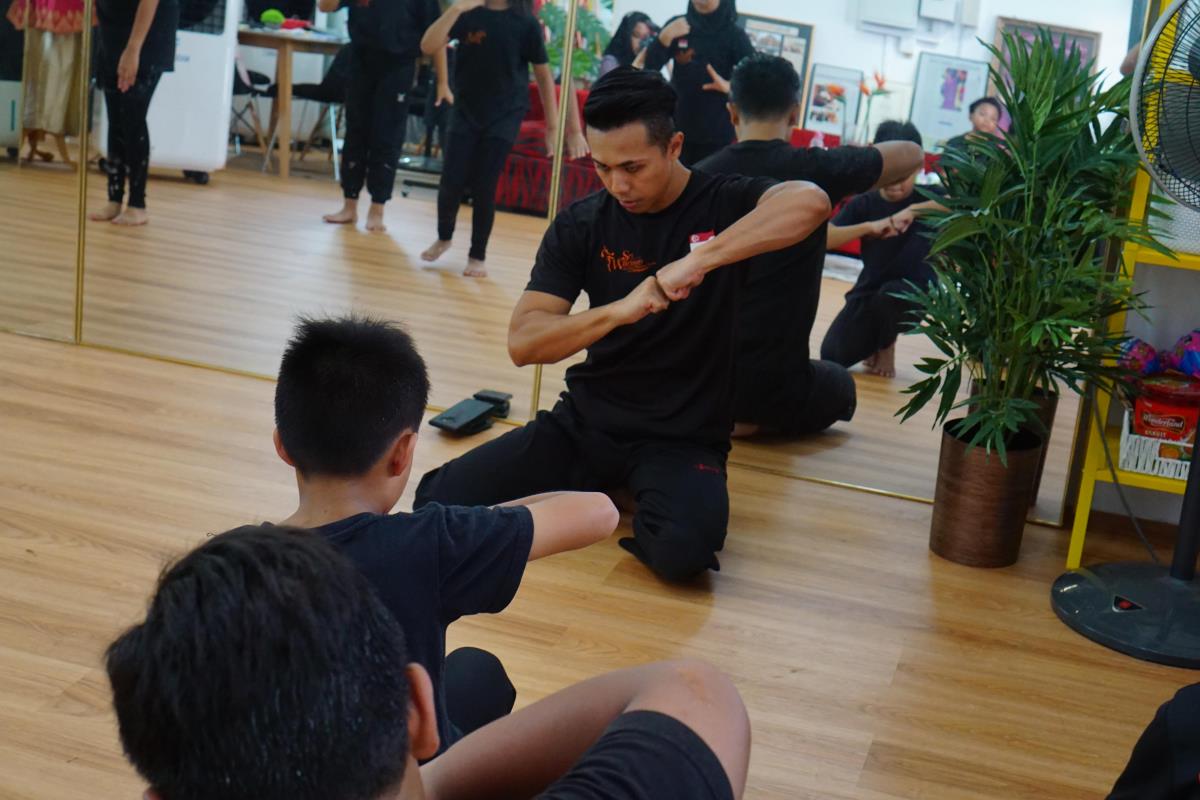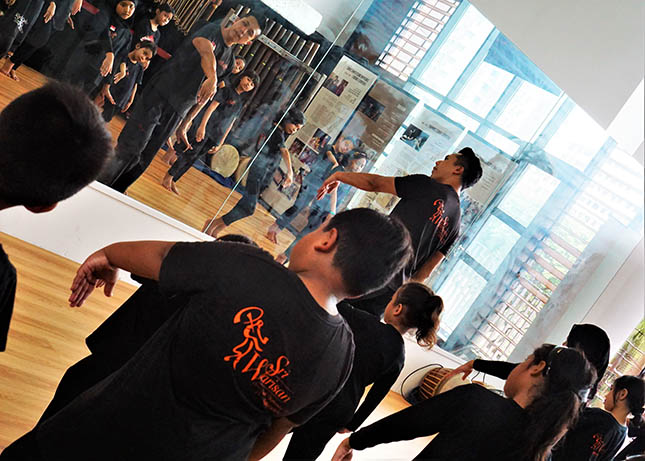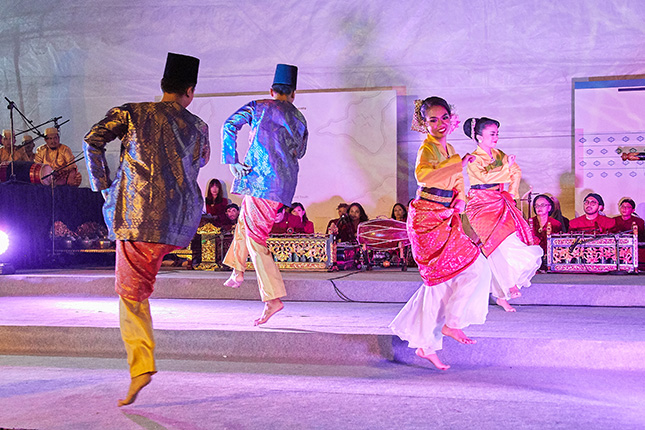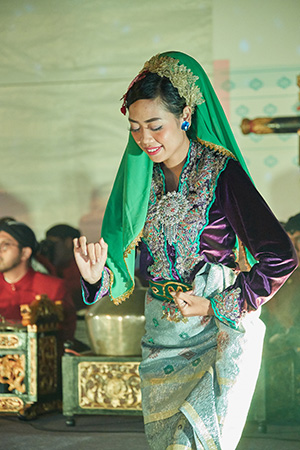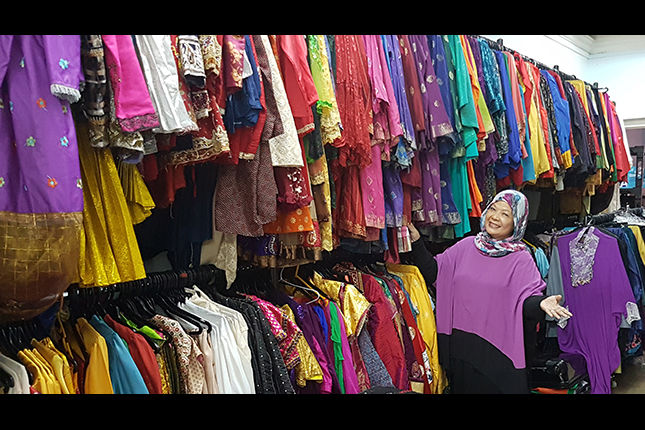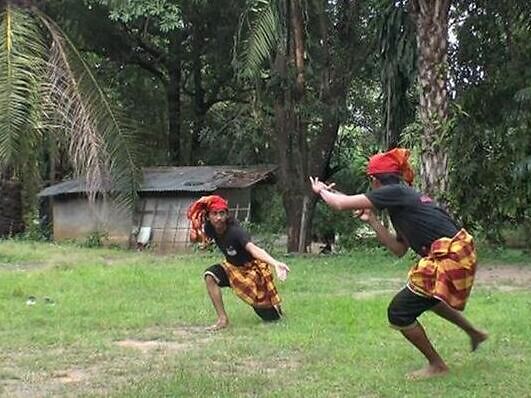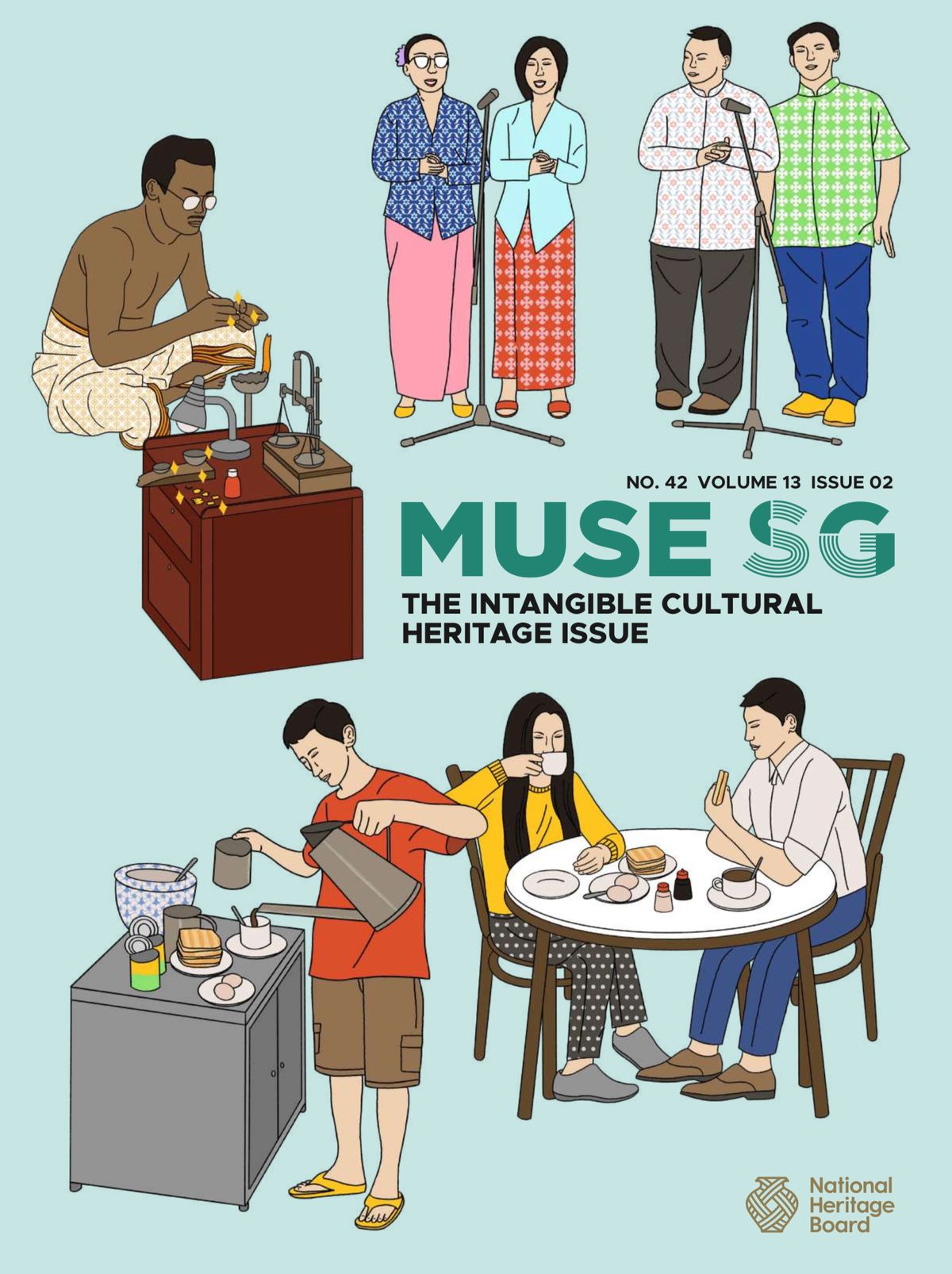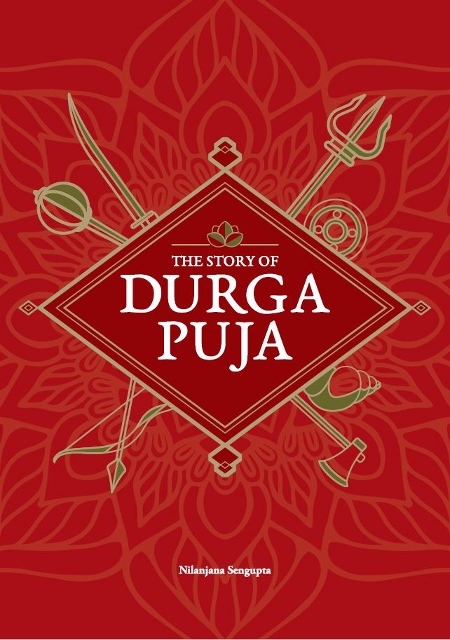Zapin
Upbeat and expressive, zapin is one of the most popular dance and musical forms in traditional Malay performing arts. Elegant dance movements are choreographed to the lively melodies, which are performed using musical instruments such as the gambus (short-necked lute), accordion and rebana.
Zapin originated from a dance tradition in the Hadhramaut region in Yemen and was introduced to the Malay Archipelago in the 14th century. In the past, zapin dancers were predominantly male. Today, however, it is not uncommon to see both male and female zapin dancers take the stage and perform together.
Geographic Location
Presently, zapin remains an integral part of the regional Malay performing arts scene, particularly in Johor and Singapore. Zapin festivals are organised in cities across the region, such as Johor Bahru, Medan, Tanjung Pinang, Pekanbaru and Jambi.
Associated Social and Cultural Practices
Zapin used to be performed in Singapore only at significant rite-of-passage events such as circumcision ceremonies and weddings. It was later popularised and is now a representative performing art form of the Malay community.
Various zapin subgenres are performed in Singapore, including Zapin Arab (‘Arabic Zapin’), Zapin Warisan Budi (‘Heritage Zapin’), Zapin Kampung Melayu (Malay Village Zapin), Zapin Tari (‘Dance Zapin’), Zapin Asyik (‘Engrossing Zapin’), Zapin Sungei Kallang (‘Zapin of Kallang River’), and Zapin Telok Blangah (‘Zapin of Telok Blangah’). Among these, the last two are unique to Singapore. Zapin Asyik was the creation of Mdm Liau Ah Choon, a choreographer engaged by the local Malay arts troupe Sriwana in the 1960s. The tune used in Zapin Telok Blangah was composed by the well-known gambus (short-necked lute) musician Mr Zubir Abdullah, who took inspiration from the life and culture of Malays living in Pasir Panjang, Pulau Blakang Mati (now Sentosa) and its namesake, Telok Blangah.
Typically, zapin performances begin with the taksim, a gambus solo, and close with a rhythmic pattern called the kopak. The musical ensemble also features the accordion, violin, rebana, marwas (double-sided hand drum), seruling (reed flute) and tenawak (gong). Instead of a live ensemble, pre-recorded zapin tracks are often used in performances in Singapore.
The popular forms of zapin dances in Singapore feature various kinds of physical movements, unlike its Yemeni parent which emphasises more on footwork. Dance moves in zapin often mimic the movements of animals and the natural world, including the keluang (fruit bat), batang (tree trunk) and pusau (swirl). Actions mirroring the culture and way-of-life of the Malay community are also integrated into the choreography of zapin, such as boat-rowing and flower-picking motions. Props, like tempak sireh (betel nut serving set) are sometimes used in Zapin Warisan Budi performances.
Communities Involved
Traditional Malay dancers are typically trained in the basics of zapin, which form part of the standard dance curricula. In Singapore, there are performing arts groups such as Sriwana and Sri Warisan that teach and showcase zapin, among other Malay dances. Local schools and educational institutions, including polytechnics and universities, also have co-curricular activities and clubs promoting traditional Malay performing arts, providing opportunities for children and the youth to learn zapin under professional instructors.
Experience of a Practitioner
At the age of 20, Mr Azhar Abdullah picked up zapin and other Malay dance forms after attending the ‘Let’s Zapin’ festival organised by Sri Warisan in 2004. As an undergraduate, he joined Sri Warisan’s dance troupe and eventually became a professional dance instructor. He shares that performing the zapin connects him to the Malay community. As zapin begins on an even instead of an odd count, he feels that it is a relatively intuitive dance form to learn. It is also crucial for dancers to maintain fitness and stamina to dance zapin. Mr Azhar opines that the zapin dance should retain the basic zapin musical drumbeat and not be set in contemporary music, so that audiences may enjoy the richness of zapin’s musical and choreographic heritage.
Present Status
While predominantly Malay, there are also zapin dancers from other ethnic communities. Today, zapin is still performed by Malay troupe dancers and students in Singapore. Annual competitions and events such as the biennial Singapore Youth Festival, Gemilang: Semarak Tari Singapura organised by the People’s Association and Muara Festival provide platforms for zapin dancers to hone and showcase their dance skills.
References
Reference No.: ICH-089
Date of Inclusion: November 2020
References
Anonymous. ‘Musical Practice of Zafin/Zapin Arab in Singapore’, Online Report, MusicSG, National Library Board. n.d. https://eresources.nlb.gov.sg/music/Media/PDFs/Article/f5199d45-7f9b-4fac-9fd3-95ff90c105df.pdf. Accessed 1 December 2019.
Anonymous. ‘Musical Practice of Malay “Traditional” Forms’, Online Report, MusicSG, National Library Board. n.d. https://eresources.nlb.gov.sg/music/Media/PDFs/Article/218d7b98-9c8c-4ca3-b95b-74b8528e38ab.pdf. Accessed 11 September 2020. /p>Ayderova, Violetta, Karen Anne Lonsdale, Goh Yen-Lin, and Mohd Pauzi Majid. ‘Exploring the Malay Traditional Genre ‘Zapin’ as Educational Material for a Western Classical Ensemble (Flute, Viola, Piano)’ (Conference Paper, APSMER2017 e-Proceedings, Melaka, 19–21 July 2017. www.academia.edu/35006319/Exploring_the_Malay_Traditional_Genre_Zapin_as_Educational_Material_for_a_Western_Classical_Ensemble_Flute_Viola_Piano_. Accessed 15 November 2019.
Era Dance Theatre. ‘MUARA Festival’. https://muarafestival.com/. Accessed 4 July 2019.
Farrer, D. S. ‘The Performance of Enchantment and the Enchantment of Performance in Malay Singapore’. Moussons. Recherche en sciences humaines sur l’Asie du Sud-Est, no. 20 (1) (2012): 11–32.
Md. Nor, Mohd. Anis. Zapin, Folk Dance of the Malay World. Singapore and New York: Oxford University Press, 1993.
Md Nor, Mohd Anis, and K. Stepputat, eds. Sounding the Dance, Moving the Music: Choreomusicological Perspectives on Maritime Southeast Asian Performing Arts. London and New York: Routledge, 2016.
Muhd. Farid, Muhd. Noramin. ‘Joget: the Popular, Ever-Evolving Music of Dance’. Online Article, Esplanade Offstage. 20 March 2018. https://www.esplanade.com/learn/in-depth/theatre-music-and-dance/joget-the-popular-ever-evolving-music-of-dance. Accessed 7 July 2019.
Rama, S. ‘The Matrix of Cultural Identities in Indian and Malay Dances’. In Evolving Synergies: Celebrating Dance in Singapore, edited by S. Burridge, 31-47. New Delhi, Routledge India, 2017.
Said, Som. Seni Tari Melayu Di Singapura: Perjalanan Som Said (The Malay Dance Arts in Singapore: Som Said’s Journey). Sri Warisan Som Said Performance Arts Pte Ltd, Singapore, 2016.




